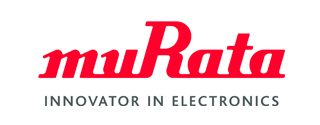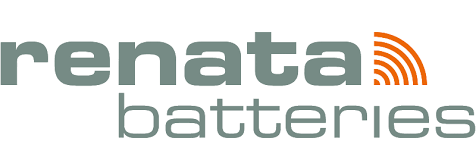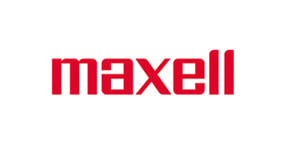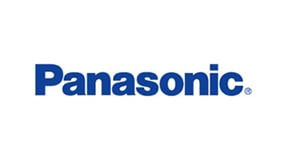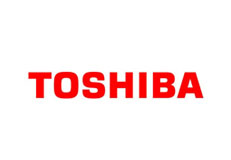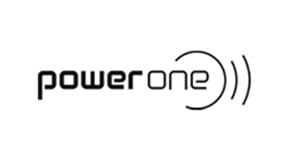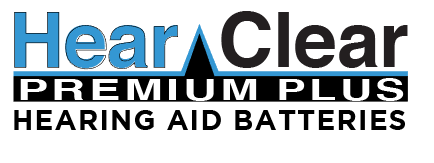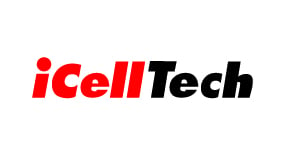Practical guide to charging different types of batteries
In a previous article, Practical tips to maximize battery life, we discussed some of the different ways that you can prolong your battery’s service life. One of them is priming, which warrants charging recommendations for different battery compositions—specifically, batteries of nickel, lithium, and lead-based chemistries.
Let’s take a brief look at charging these chemistries and a few rules of thumb.
Nickel-based batteries
Both the nickel metal hydride (Ni-MH) battery and its predecessor, the nickel-cadmium (Ni-Cd or NiCad) battery, are charged using a method called constant current constant voltage (CCCV). A full charge is reached when there is a slight drop in voltage following a steady rise. Unlike lithium and lead-based chemistries, which are charged with a regulated current, the voltage rises freely. This makes nickel chemistry batteries more complex to charge.
Nickel-cadmium batteries: Similar to lead-based battery systems, newly purchased NiCad batteries are not fully formatted or primed by the manufacturer. NiCad batteries should be charged for 16–24 hours prior to use, unless otherwise provided on accompanying instructions. Charging will serve to equalize the charge levels of the battery’s cells which may have independently discharged at variable rates. It will also facilitate the redistribution of a battery’s electrolytes which tend gravitate to the bottom after prolonged storage.
The optimal performance of a NiCad battery is connected with its quality. While quality cells can perform optimally after 5–7 cycles, cheaper cells may require 50 cycles or more to perform at their rated specification. Once plateaued to full capacity, performance will begin to gradually decline.
Upon full charge, nickel cadmium batteries will continue to receive a minimum trickle current to offset their self-discharge. Since prolonged trickle charges to a fully charged battery stresses it, unnecessarily delaying the removal of your charged batteries from the charger is discouraged.
Nickel metal hydride batteries: The charging of an Ni-MH battery implements a more complex technical process than its cadmium sibling. Most modern chargers developed for nickel-based batteries can accommodate both battery types. Unfortunately, lower priced chargers are prone to incorrect charging. This can be offset by understanding technical concepts such as estimating SoC (state of charge) to manually set a charge time.
Quality rechargeable battery chargers often use a step-differential method of charging that involves applying an initial fast charge up to a designated voltage threshold and reducing it as the charging session progresses. Each threshold achieved is followed by a cooldown period of several minutes. An aggressive charger using this method allows your rechargeable AA batteries, for example, to achieve a higher capacity gain, but it also comes with a caveat: the stress assessed to your battery decreases its efficiency over time and shortens its service life.
As with NiCad batteries, it is inadvisable to leave your charged batteries in the charger for eventual use. Remove them early, and if desired, give them a quick recharge just before using them.
Lithium batteries (Li-ion)
The accommodating chemistry of lithium batteries makes them good candidates for renewable energy applications such as solar panels and wind turbines; and with a charge circuit that is straightforward, the technical process involved in charging a lithium-ion battery is simplified and dismisses the need for equalized charging. It should be noted that with few exceptions, most consumer and industrial Li-ion chargers do not offer adjustable end-of-charge voltages, which would likely prolong the service life of the batteries. The option is viewed as complicating the charger.
On a practical level, and as it is with other battery chemistries, instability can occur if you charge your lithium-ion battery beyond its rated voltage. Care and proper handling are paramount to the prevention of safety hazards, such as fires and meltdowns, that can result from overcharging or mishandling.
Li-on batteries do not absorb overcharge and should be regularly be removed from the current shortly before achieving maximum charge. Operation on partially charged batteries actually improves its service life. A continuous trickle charge could promote plating of metallic lithium and introduce safety concerns. Some lithium-ion chargers made for standby mode apply a brief topping charge to compensate for the small self-discharge of the battery and its protective circuit if left in charger for operational readiness. Others will let the battery voltage slightly drop to help reduce voltage stress and prolong battery life.
A battery charged while installed or embedded in its parent device should not be in simultaneous use. The parent device should be switched off, or at a minimum, left in its non-active sleep mode. Otherwise creates a parasitic load that draws current as it simultaneously charges. This can cause your device to erroneously signal that the battery is full when it is not, or to indicate a lower state of charge when the battery is, in fact, fully charged. The faulty indication of a battery’s charge stresses your lithium-ion battery.
Lead-acid batteries
Like NiCad batteries, lead-acid batteries implement the constant current constant voltage (CCCV) charge method and cannot be charged as quickly as other battery systems. Expect a charge time to range 12–16 hours for most units, for example, a car or motorcycle battery; and as long as 36–48 hours for larger, stationary, battery systems such as those used in high power output applications (e.g., large generators). Multi-stage methods and higher charge currents can reduce charge time, but this is at the expense of forfeiting the topping charge as described below.
Lead-acid batteries proceed through three charging stages:
- Constant-current charge that charges the lead-acid battery to about 70 percent in 5–8 hours. Once the voltage level is reached, the battery seamlessly enters the next charging phase.
- Topping charge, which comprises most of the remaining charge time at a lowered charge current and is comparable to a dormant or relaxed state. This stage provides saturation. Continuous deprivation of this stage will eventually diminish your battery’s performance due to a buildup of lead sulfate crystals (a condition known as sulfation) and its inability to accept a full change. This charging stage is vital to maintaining your lead acid battery’s health.
- Float charge, which helps to offset power lost during self-discharge and maintain your battery at maximum charge. If your battery charger does not feature a float charge stage, it is advisable to remove your battery from the charger after 48 hours and recharge it every 6 months.
Lead-acid batteries must always be stored charged and a topping charge should be applied every 6 months to discourage sulfation.
Two concepts should be understood about the unique chemistry of lead-acid batteries with regard to charging:
Oxygen generation, or gassing, occurs when the battery is overcharged. It can be averted by using a quality three-stage charger that will keep voltages below the gassing stage by limiting charge voltage and decreasing to a float charge. When using chargers that do not include the float-charging feature, it is important to keep an eye on your battery and make sure that it neither heats nor boils from high voltage.
Watering is a frequently neglected and misapplied step to maintaining flooded lead-acid batteries; yet it is one of the most important for maintaining its health. Water is depleted through usage and overcharging. You can estimate your required watering frequency by checking your battery every few weeks. The aim is to make certain that the tops of your plates are always submerged in water. Oxidation from exposure to air can irreversibly reduce your battery capacity and diminish its performance. Water your battery with de-ionized or distilled water. When preparing to charge your battery, avoid filling to the correct level as this can cause it to overflow during the charging process; rather, top up the water after charging. It is also important to never add electrolyte as this would promote corrosion.
Takeaways and rules of thumb
| NiCad and Ni-MH batteries | Lithium-ion batteries | Lead-acid batteries |
| Charge efficiency is nearly 100 percent at up to 70 percent charge level. The battery remains cool but begins to warm up with decreasing efficiency towards full charge. | Turn off your device or disconnect the load (e.g., cease device use) while charging to allow the current to drop unhindered during saturation. A parasitic load can confuse the charger. | Recharging after each use prevents sulfation Determine the right charge program for your lead-acid battery. Recommended voltage thresholds can be found in the manufacturer’s specifications. |
| Low end chargers often do not gauge charge levels correctly. Batteries that are warm to the touch should be removed. A charger that “cooks” batteries until they are hot to the touch may indicate a faulty charger. | Lithium-ion batteries do not need to be regualrly charged to full capacity. A partial charge, for example, 75 percent, is better. Discontinue use of a charger or battery if either are excessively warm to the touch. | Flooded lead-acid batteries must always be fully submerged in electrolyte. Fill the battery with de-ionized or distilled water to cover the plates. Overfilling can cause acid spillage during charge. Never add electrolytes. |
| Charge at a comfortable ambient room temperature Do not charge in hot or cold temperatures. | Charge at a moderate room temperature and never at freezing temperature. | Charge in a well-ventilated area. Charging generates combustible hydrogen gas. Lower the float charge voltage if the ambient temperature is higher than 29°C (85°F) and avoid charging at temperatures above 49°C (120°F). Never charge a frozen battery. |
| Do not store your nickel-based batteries in the charger for later use. Upon completion of the charge session, remove your batteries. | Do not store your lithium-ion battery completely discharged or in the charger. Store at room temperature and ideally at 40-50 percent state of charge. | Do not store your lead-acid battery on low charge or permit it to freeze. An empty battery freezes faster than one that is fully charged. |
| Use the charger designated for your battery type. A charger designed for Ni-MH charging can charge a NiCad battery, but a NiCad charger will overcharge and damage an Ni-MH battery. | Chargers may not always apply a full topping charge which means your battery may not be fully charged when “ready” or “100%” is indicated. | Gas bubbles in a flooded lead-acid battery indicates that it is approaching a full state-of-charge. Hydrogen bubbles appear on the negative plate and oxygen on the positive plate. |
You can learn more about rechargeable batteries and battery chargers with these great articles:
Factors to consider when choosing a battery charger
Tips for repairing or upgrading battery packs
Smart battery technology and usage tips
